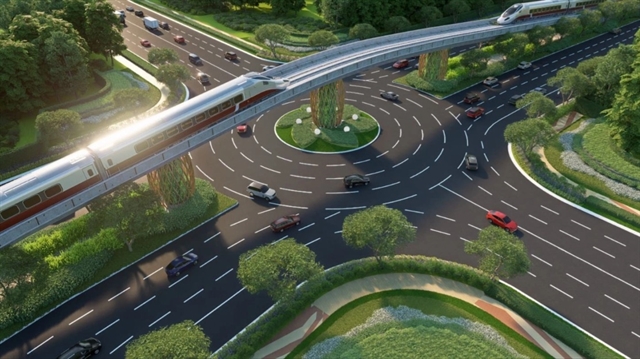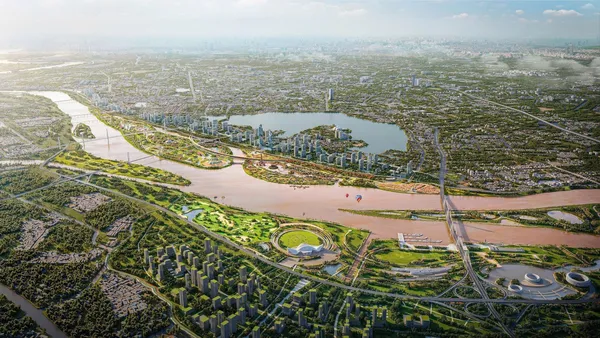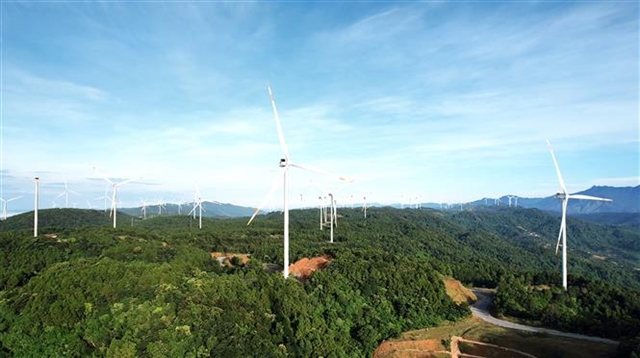 Society
Society
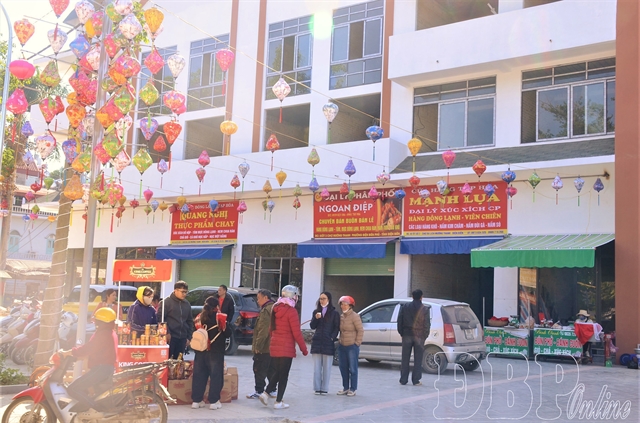
After seven months of farming, Sĩ noticed the survival rate of fish was up to 90 per cent and the average fish weighed about five kilogrammes each.
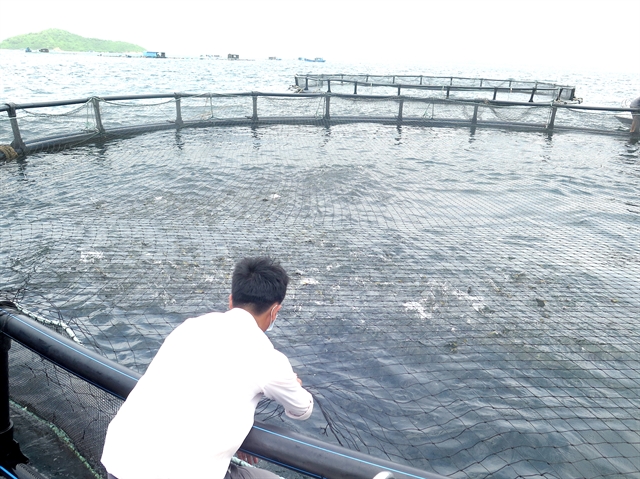
|
| A round HDPE floating cage housing cobia fish in Vân Phong Bay, in the central-southern Khánh Hòa Province. VNA/VNS Photo Phan Sáu |
KHÁNH HÒA — Farmers who breed fish in floating cages in central Khánh Hòa Province never thought that they could raise fish in offshore areas, where wind speeds reach 130kph on stormy days.
The simple wooden or bamboo cages they had been using for fish and lobsters only work in the safety of the bay. However, when the powerful Typhoon Damrey struck in 2017, wreaking havoc along the south-central coast of Việt Nam, the local fish farmers noticed not everyone suffered the same losses.
Nguyễn Xuân Hòa, a farmer from Vạn Lương Commune in Vạn Ninh District, has more than 20 years of experience raising aquaculture in Vân Phong Bay. He suffered terrible losses when Typhoon Damrey hit the bay, sweeping away all 250 of his floating fish cages worth roughly VNĐ20 billion (US$881,920).
Hòa lost all of his fish, and he wasn't alone; his neighbours suffered the same. However, the plastic floating cages used by foreign businesses were still in the bay. They were made with high-density polyethylene (HDPE) and used nets with an anti-fouling coating, based on Norwegian technology.
Hòa was among the first local farmers to invest in these new floating cages, as part of a wider project to rebuild cobia fish farming in the 2020-22 period, implemented by Khánh Hòa Province’s Agricultural Extension Centre.
“I’ve raised fish in these cages since 2020. The fish are healthy and particularly safe during the stormy season, so I have higher yield,” he said.
“I think farmers should invest in the new technology if possible. The initial investment price is a bit high, but it can be used for a long time,” he added.
The round-shaped HDPE floating cages have three main parts: a frame, net and anchoring device. The frame is a buoy made of HDPE pipes.
Round cages are installed separately instead of being combined into rafts like traditional wooden cages. This improves the survival rate of fish and minimises the spread of disease.
The floating cages can also be placed offshore where the water is less polluted. They can endure winds and waves, are easy to move, and can house a large quantity of fish. They are convenient for checking and harvesting fish.
The model is used widely in modern-industrial aquaculture all around the world.
Trần Ngọc Sĩ, another farmer in Vạn Lương Commune, said he started using HDPE floating cages earlier this year to farm 1,000 cobia fish.
Sĩ said the wooden cages had a surface size of 4m by 4m and a height of 5-10m while the round HDPE cages have a diameter of 10m and a cage volume of 500 cubic metres. The round HDPE can stock about 1,000 fish per cage.
The cages are made domestically and cost around VNĐ180 million ($7,930), which was less than half of the imported Norwegian product.
After seven months of farming, Sĩ noticed the survival rate of fish was up to 90 per cent and the average fish weighed about five kilogrammes each.
Sĩ said he is no longer in a hurry to sell his stock. The process of raising fish in HPDE cages is simple and can easily be operated by only two people.
He plans to keep raising the fish and wait until the end of this year to get good prices.
“Since I’ve installed HDPE floating cages, I feel more secure about coming storms. If things go well, I’ll invest in more cages to raise lobsters as this aquaculture brings more profit,” he said.
Huỳnh Kim Khánh, director of the provincial Agricultural Extension Centre, said that after the devastating consequences of Typhoon Damrey in 2017 towards fish farming in the province, especially in Vân Phong Bay, the centre researched the recovery of cobia farming in the 2020-22 period and received support for six round HDPE floating cages, with a budget of VNĐ4.75 billion ($209,450), in which VNĐ3 billion ($132,280) was from the agricultural extension fund.
The centre then organised training courses for local farmers. After nearly two years of piloting, local farmers have invested in more than 100 HDPE cages in the bay.
In 2020, the project supported farmers with three HDPE cages. This year, local farmers received VNĐ1.3 billion ($57,320) to buy floating cages. A single HPDE cage can bring 4.2 tonnes of fish, around 900 cobia fish. The average selling price was between VNĐ125,000–140,000 per kilo, bringing profits of around VNĐ88 million ($3,880).
Khánh said this model will be expanded over the next few years to completely replace wooden cages by 2030. This will modernise and improve the productivity of fish farming in the province, opening offshore marine farming while becoming a new tourism site. The provincial agricultural sector will need supportive policies to achieve the goals.
Nguyễn Ngọc Ý, head of Vạn Ninh District’s Economy Office, said 1,200 households were raising 40,000 fish and lobster cages. The transition from wooden cages to HDPE ones was suitable for climate change, but the price was quite expensive.
Farmers should consider the transition while the State should have more support policies to expand the model, he said.
Lê Quốc Thanh, director of the National Agricultural Extension Centre, said during a trip to Vân Phong Bay on November 16 that the HDPE floating cages were sustainable and should be expanded in other marine farming localities.
The centre will set up forums to help farmers access this farming technique. — VNS

